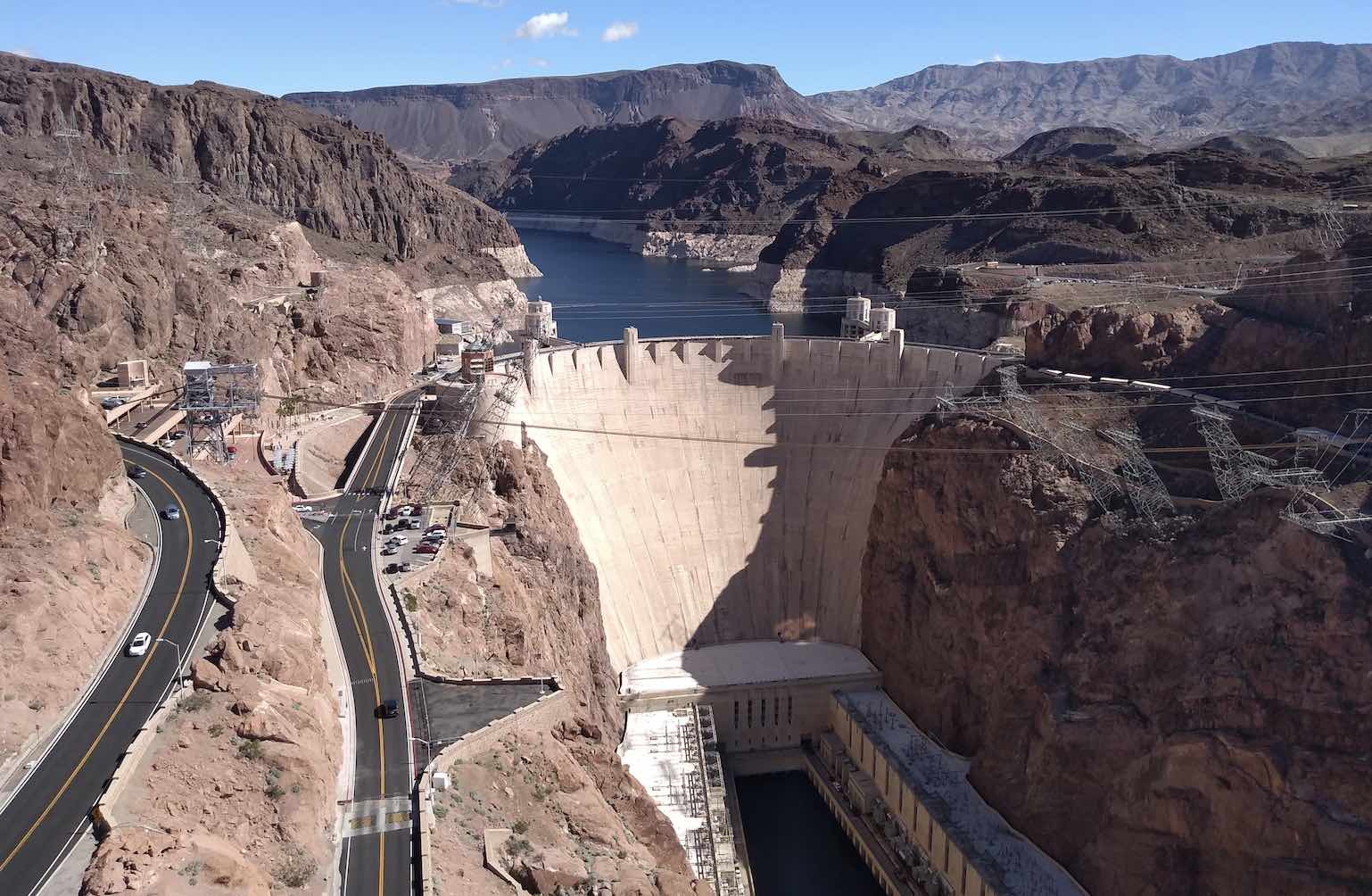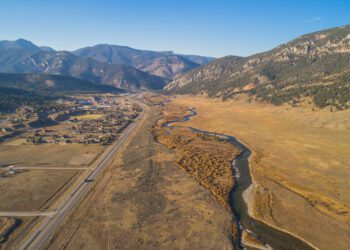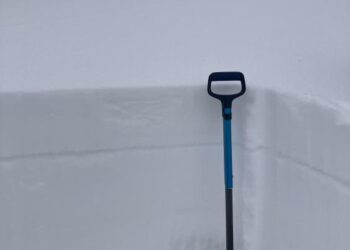Benjamin Alva Polley EBS COLUMNIST
Imagine being a wild, free-flowing river plugged by a dam. Your freedom of movement is completely imprisoned. Around you, your health and those surrounding ecosystems who depend on you slowly wither away.
Nothing can fix or heal a dammed river except removing the blockage. Once the dam is removed, riffles and falls downstream slowly return. Different degrees of flood stages return. Logs, pebbles, gravel and other food sources held up by the dam’s creation are free—the gravel beds on the river bottom return, allowing salmon and trout to spawn. Alders, cottonwoods and willows return on the banks, and songbirds and beavers return. A whole host of life forms bloom. The river rejoices in its wild, free-flowing nature.
In numerous cases, dams are a vestige of a bygone era. Whether built for energy, flood control, municipal water or other purposes, dams often have a short lifespan. Society usually moves beyond their intended use before prioritizing their removal because doing so is complex and expensive, even though many dams are a public hazard.
“We are witnessing a rapid change in our communities’ values around dams,” says Rob Roberts, project manager for Montana Trout Unlimited. “In some cases, these structures have been built and become obsolete in less than 100 years, either replaced by different technology or removed as society’s values shift from industry to recreation or extraction to restoration.”
Dams are structures built across rivers or streams to control the flow. To dam something is to divert or control its essence. By their very nature, rivers are meant to flow moving nutrients and sediments downstream, replenishing riverbanks and shorelines. Some plants, like cottonwoods, depend on the resurging ebb and flow of disturbance from floods to bring nutrients downstream by uprooting trees and creating space for new growth. Dams were first constructed to capture large quantities of fresh water for storage, such as community drinking water and subsequently released over time for irrigating crops, creating vast amounts of electricity through hydropower, creating recreational sites and helping mitigate or prevent flooding.
Ancient Mesopotamia may have been some of the first pioneers to control and mitigate water flow for crop distribution. The Jawa Dam in Jordan is one of the oldest known dams. It was erected to help feed a growing population in the fourth century B.C.E. Ancient Romans were also master dam builders who constructed dams in the first and second centuries C.E. for bathing, drinking water and irrigation.
Engineers during the Industrial Revolution began building giant dams to help power big machinery needed for factories and mines. These big dams plug the velocity and volume of larger rivers and create reservoirs behind them. They began using concrete and steel reinforcements to develop these structures, holding back millions of tons of water. The engineers built large turbines in the dams to generate hydroelectricity. When the water flows through it moves the turbines. According to a study in 2018 by Columbia University, hydropower generates 16 percent of the total global electricity. There are an estimated 800,000 dams worldwide. The World Commission on Dams estimates that 30-40% of irrigated land depends on dams.
Currently, there are an estimated 91,000 dams in the U.S. Dam building had its heyday in this country between 1820-1960, with the mid to late 1930s being the climax of putting Americans back to work by building massive dams. The U.S. Bureau of Reclamation and the Army Corps of Engineers owns, operates, and creates most large dams throughout the U.S.
Montana has 3,259 dams and over 64,000 reservoirs. Large dams are several hundred feet tall and often constructed with concrete. Medium dams are typically between 30-150 feet tall and usually made of earthen construction like wood and rock. Small dams generally are less than 30 feet tall and referred to as pond dams, and most of the dams in Big Sky country fit under this latter category. 76% of Montana dams are privately owned by water companies, ranches, farms, individuals, corporations, or mining companies. 13% are federally owned, and state agencies like Montana Fish, Wildlife and Parks, Natural Resource Conservation, and the Department of Corrections own 5%. Reservations own 3% of the total dams, as do local governments, and local utilities own 1% of the total dams in the state.
“Concrete has a life span of around 60 years. These small dams were built when needed to serve the economy of their time,” said Denise Hoffert, a dam removal specialist who owns a consulting firm. “Most dams were built to divert or store water for irrigation, power a mill, or water livestock. But that economy has changed. We don’t need the majority of these dams anymore, and a lot of them are crumbling.”
Many western rivers, especially Montana rivers, are in trouble with fisheries collapsing. There are numerous causes for this collapse, including climate change, overfishing, overpopulation of people needing more resources, dams and old irrigation laws.
“Ranchers continue to flood irrigate with every drop they are allotted because that’s what they’ve always done, and if you don’t use it, you lose it,” said Evan Phillippe, angler and former fishing guide. “Old water laws don’t die easily. Flood irrigation is highly inefficient. Pivot sprinklers are very expensive. So, the age-old system remains.”
A recent book by a former University of Montana graduate, Steven Hawley, called “Cracked: The Future of Dams in a Hot, Chaotic World,” was published this spring by Patagonia Books. The book discusses how dams, by their very nature, are political. Throughout the last hundred years, government agencies have built dams for hydropower and irrigation, but the dams have disproportionately benefited corporations and the privileged. It’s the same song and dance about big money, politics, lobbying, poor management, and broken promises with indigenous cultures. There is no doubt that dams are engineering marvels, but trying to outsmart and contain nature is always cause for alarm and usually has unforeseen environmental consequences. In an era of climate chaos, are dams still necessary?
Hydropower is considered the cleanest form of renewable energy that doesn’t add to global warming, air pollution, or ozone depletion, but is damming rivers all good?
Dams have numerous environmental impacts, including degrading river ecosystems, depleting fisheries, and altering recreational opportunities on most rivers. Barriers limit fish migration by restricting access to spawning habitats and limiting food resources. Fish passage structures help some, but not all fish species move around dams. Salmon depend on steady river flows to guide their migration. Many fish rely on open rock riverbeds to spawn, but sediments backed up by dams prevent them from doing so. When salmon are allowed to return to their spawning grounds, and their bodies decompose, it provides food and nourishment for bears, eagles, ravens, wolves, and many others. When bears and other carnivores carry salmon into the forest, they eat the heads off and leave the bodies, integrating into the environment, adding nitrogen to the soil, and helping the land become lush. Reservoirs often become stagnant and disorient migratory fish. Dams alter the timing of river flows that generally happen during spring break up, triggering natural growth and reproduction cycles in plants and aquatic organisms. The stagnant water behind these barriers is a reservoir that often heats up and affects many cold-water species, like trout and salmon, that are sensitive to temperature fluctuations. This water often heats up, leads to evaporation and algal blooms, and decreases oxygen levels.
Dam removal usually happens because upkeep and maintenance become more expensive than the benefits it provides.
“In some cases, the results of dam removal are swift and impressive, as fish immediately return to natal spawning areas, or flows of sediment and wood rejuvenate estuaries or floodplains starved of those vital ingredients,” Roberts said. “Sometimes, the effects are more subtle; one could even say symbolic. For example, where fisheries have been diminished because of the overlapping effects of water pollution, climate change, or harvest, dam removals can sometimes seem like it’s just the right thing to do, to be intentional about turning back the clock, giving nature back its course and providing the open space, broad valleys, and free-flowing water that humans naturally gravitate to and instinctively depend on.”
The old euphemism, “god-damnit,” is untrue. Only man dams things—time to heal the arteries of the land and remove dams.
Benjamin Alva Polley is a place-based storyteller with stories published in Outside, Adventure Journal, Popular Science, Field & Stream, Esquire, Sierra, Audubon, Earth Island Journal, Modern Huntsman, and other publications at his website www.benjaminpolley.com/stories. He holds a master’s in Environmental Science and Natural Resource Journalism from the University of Montana.











